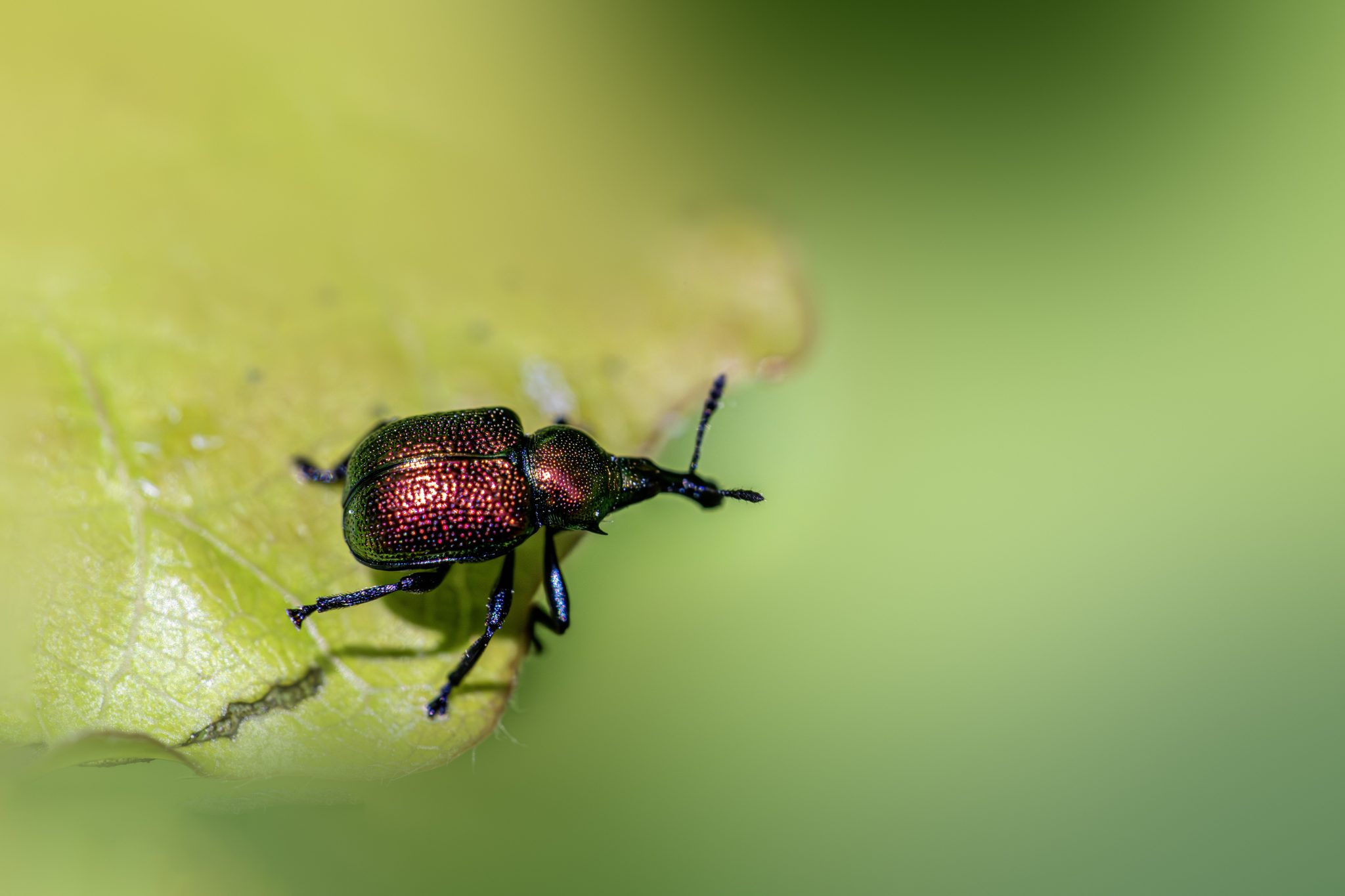Here’s a detailed and photo-caption–ready overview of the Aspen Leaf-rolling Weevil (Byctiscus populi) — a small but striking beetle known for its elegant leaf-rolling behavior. 🪲🍃
🪲 Aspen Leaf-rolling Weevil (Byctiscus populi)
Scientific name: Byctiscus populi (Linnaeus, 1758)
Common names: Aspen Leaf-rolling Weevil, Poplar Leaf Roller
Family: Attelabidae (Leaf-rolling Weevils)
Genus: Byctiscus
🌍 General Overview
The Aspen Leaf-rolling Weevil is a small metallic beetle found throughout Europe and parts of Asia, recognized for its unique habit of rolling leaves into cigar-shaped tubes as protective cradles for its eggs.
It is a characteristic insect of aspen and poplar groves, often noticed in late spring and summer when freshly rolled leaves hang from trees or lie on the ground beneath them.
🧬 Identification
| Feature | Description |
|---|---|
| Size | 5–7 mm in length |
| Body shape | Compact and oval, typical of leaf-rolling weevils |
| Coloration | Brilliant metallic green, copper, or blue-green depending on angle and light |
| Rostrum (snout) | Short and curved, used for feeding and leaf manipulation |
| Antennae | Elbowed, with a distinct club |
| Legs | Coppery or bronze, robust for climbing foliage |
This beetle’s shimmering metallic color and compact build make it quite photogenic — it’s one of the most colorful weevils in Europe.
🌿 Habitat and Host Plants
- Found in woodlands, riverbanks, parks, and gardens where poplars, aspens, or willows grow.
- Host plants include:
- Populus tremula (European aspen)
- Populus nigra (black poplar)
- Salix spp. (willows)
🐣 Life Cycle and Leaf-rolling Behavior
- Egg-laying:
Females cut and roll a section of a leaf into a tight cylindrical “leaf roll”, then lay one or several eggs inside. - Larva:
The larva develops inside the rolled leaf, feeding on the leaf tissue. - Pupa:
Pupation occurs within the same roll or in soil litter beneath the host plant. - Adult:
Adults emerge later in the summer or overwinter in leaf litter and bark crevices, becoming active again in spring.
This rolling behavior provides protection from predators, desiccation, and parasites — an ingenious natural shelter system.
🏞️ Distribution
- Native range: Throughout Europe, Anatolia, Caucasus, and Central Asia.
- Habitat: Deciduous and mixed forests, woodland edges, hedgerows, and riparian zones.
- Altitude: Sea level to montane regions.
🕊️ Behavior
- Active season: April to August.
- Adults are often seen feeding on leaf edges of poplar and willow trees.
- When disturbed, they drop and feign death (thanatosis), a typical weevil defense tactic.
- Leaf rolls are easy to spot hanging from twigs or scattered beneath trees.
⚖️ Conservation Status
- Status: Common and widespread.
- Threats: None significant; occasionally affected by forestry pesticide use.
- Ecological importance: Minor herbivore, but an important part of woodland biodiversity.
🧭 Similar Species
| Species | Distinguishing feature |
|---|---|
| Byctiscus betulae | Smaller; found on birch leaves |
| Byctiscus pubescens | More elongated body; on willows |
| Deporaus betulae | Slightly different body shape and darker coloration |
📊 Quick Facts
| Category | Details |
|---|---|
| Scientific name | Byctiscus populi |
| Common name | Aspen Leaf-rolling Weevil |
| Family | Attelabidae |
| Size | 5–7 mm |
| Color | Metallic green or coppery |
| Host plants | Aspen, poplar, willow |
| Flight period | April–August |
| Range | Europe, Western Asia |
| Status | Common |
🌿 Interesting Notes
- The genus name Byctiscus derives from Greek, meaning “folded” or “curved,” alluding to the beetle’s leaf-rolling behavior.
- Leaf rolls can contain 1–6 eggs, and the rolled leaves may fall naturally to the ground, where larvae complete development safely.
- Despite its feeding habits, Byctiscus populi causes no serious damage to trees and is an indicator of healthy woodland ecosystems.
Views: 96
Subscribe to the newsletter:
